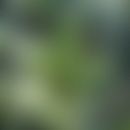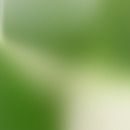Synonym(s)
DefinitionThis section has been translated automatically.
Nasturtiums are annual to perennial herbaceous plants from the nasturtium family (Tropaeolaceae - order of the cruciferous plants - Brassicales). Originally native to South America and Central America, some species are now cultivated worldwide. The pungent taste of the plants is caused by mustard oil glycosides (e.g. glucotropaeolin).
The fresh leaves are used in salads because of their pungent taste. The fresh, unripe fruits (so-called false capers) are also used
The herb of the nasturtium(Tropaeoli maji herba) is used for infections of the urinary and respiratory tracts. A positive substance characteristic is available for Tropaeoli maji herba instead of a monograph.
Please note: No pharmacopoeia quality description!
HMPC: Not processed
ESCOP: Not processed
But: In combination with horseradish root, indications proven by clinical studies (approval)!!! Acute inflammatory diseases of the bronchi, sinuses and urinary tract. Preparation: Angocin® Anti-Infekt
Commission E: Since at the time of processing no monopreparation, but only combination preparations were on the market, Commission E has only established a positive substance characteristic: on the basis of the pharmacological properties, a positive contribution to efficacy in combinations with other drugs for the supportive treatment of infections of the urinary tract can be assumed, also for catarrhs of the airways and externally for mild muscle pain.
Empirical medicine: internal: menstrual disorders, external: infected wounds, hair loss, promotion of hair growth
General informationThis section has been translated automatically.
Cosmetics:
The extract from the herb is used in cosmetic formulations under the INCI designation"Tropaelum majus extract".
You might also be interested in
Note(s)This section has been translated automatically.
Nasturtium was chosen as the medicinal plant of the year 2013.
The name "nasturtium" is derived from the Old High German word cresso 'sharp', the name part "capuchin" from the flower shape, which is said to resemble the hoods of monks' cowls.
Preparations: Contained in Angocin® Anti-Infekt N
LiteratureThis section has been translated automatically.
- https://arzneipflanzenlexikon.info/kapuzinerkresse.php
- Albrecht U et al. (2007) A randomized, double-blind, placebo-controlled trial of a herbal medicinal product containing Tropaeoli majoris herba (Nasturtium) and Armoraciae rusticanae radix (Horseradish) for the prophylactic treatment of patients with chronically recurrent lower urinary tract infections. Current medical research and opinions 23:2415-2422
- Conrad A et al (2006) In vitro studies on the antibacterial efficacy of a combination of nasturtium (Tropaeoli majoris herba) and horseradish root (Armoriciae rusticanae radix. Drug Res. 56: 842-849
- Wenigmann M. (2017) Phytotherapy medicinal drugs, phytopharmaceuticals, application. Urban & Fischer, pp. 138-139
- https://www.awl.ch/heilpflanzen/tropaeolum_majus/kapuzinerkresse.htm
- http://www.pharmakobotanik.de/systematik/6_droge/tropaeol.htm




